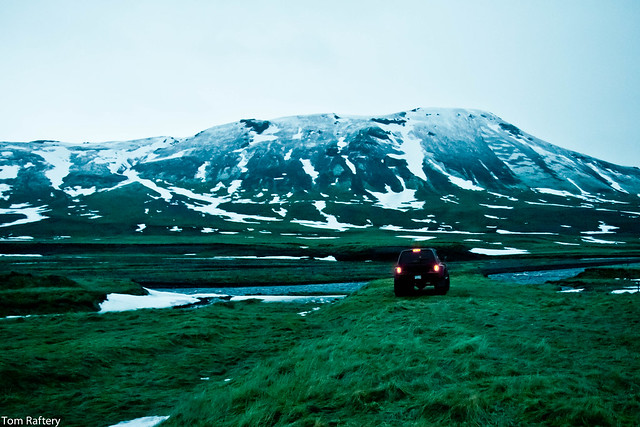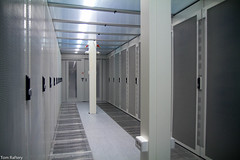Iceland’s a funny place. Despite the name, it never actually gets very cold there. The average low temperature in Winter is around -5C (22F) and the summer highs average around 13C (55.5F). Iceland is also unusual in that 100% of its electricity production comes from renewable energy (about 70% from hydro and 30% from geothermal).
I have written here several times about the high carbon cost of cloud computing, so when I received an invitation from Colt Technology to view the new data centre they had built with Verne Global in Iceland, I nearly bit their hand off!
The data centre is built on an 18-hectare (approximately 45-acre) complex west of Reykjavik, just beside Keflav?k Airport. The site is geologically stable and according to Verne:
The facility is situated on the site of the former Naval Air Station Keflavik, a key strategic NATO base for over 50 years and chosen for its extremely low risk of natural disaster. Located well to the west of all of Iceland’s volcanic activity, arctic breezes and the Gulf Stream push volcanic effects away from the Verne Global site and toward Western Europe.
The data centre was built using Colt Telecom’s modular data center design. This is essentially a data centre in a box! The modular data centre is built by Colt, shipped to site, (in this case, it was literally put on a ship and shipped to site – but the modules fit on a standard wide-load 18-wheeler), where it is commissioned. In the case of the Verne Global data centre, the build of the data centre took just 4 months because of the modular nature of the Colt solution, instead of the more typical 18 months. Also, modularity means it will be relatively straightforward to add extra capacity to the site, while keeping up-front data centre development costs down.
The data center has an impressive number of configurable efficiency features built-in. In the Verne Global facility, cold aisle containment is used and it is a wise choice in this environment. The facility uses only outside air for cooling (no chillers) so it makes sense to vent the hot air from the servers into a room being cooled by outside air. In winter, if the outside air is too cold, it can be mixed with hot air from the servers before entering the underfloor space to cool the servers.
The underfloor space is kept free of plenums and obstructions to allow an unimpeded flow of air from the variable speed fans – this minimises the work needed to be done by the fans, increasing their efficiency.
From an energy perspective, though, what makes the site very unique is that it sources its electricity from dual renewable sources (hydro and geothermal). Iceland is in quite a unique situation with its excess of abundant, cheap renewable power. Energy is so cheap in Iceland that aluminium smelting plants locate themselves there to take advantage of the power. These plants require roughly 400-500MW of constant power, so adding even 10 large data centres to the grid there would hardly be noticed on the system!
Another unique aspect of the Icelandic electricity is that because it is renewably sourced, its pricing is predictable (unlike fossil fuels). In fact, the Icelandic electricity provider, Landsvirkjun, offers contracts with guaranteed pricing up to 12 years. Also, the Icelandic grid ranks 2nd in the world for reliability and has the most competitive pricing in Europe (currently offering $43/MWh for 12 years as public offering – with better private offerings potentially available).
Speaking to Verne Global’s Lisa Rhodes, while in Iceland, she told me that because Verne had guaranteed energy pricing from Landsvirkjun for the next 20 years, they would be able to pass this on to Verne’s hosting customers and, in fact, she claimed that hosting in the Verne facility would cost 50-60% of the cost of hosting in the East coast of the US.
On the connectivity front, Colt announced that they were putting a Colt POP in the Verne facility, so it is connected directly into the Colt backbone.
Also, the Emerald Express fibre-optic cable which is due to be commissioned late this year has been designed to support 100x100Gbs on each of its six fibre pairs, which should easily meet any connectivity requirements Iceland should have well into the future.
Interestingly, one of Verne’s Global’s first customers is greenqloud – a company offering green public compute cloud services (an AWS EC2 and S3 drop-in replacement). With this, can we finally say that cloud computing can be green? Unfortunately, with cloud’s propensity to promote consumption of services, no, but at least with Greenqloud, your cloud can have a vastly reduced carbon footprint.
Full disclosure – I had my travel and accommodation paid for to visit this facility. And Colt has a POP in CIX, the data centre I co-founded in Cork before joining GreenMonk.



[…] it is a long way off the 100% of electricity from renewables that Verne Global’s new data centre […]